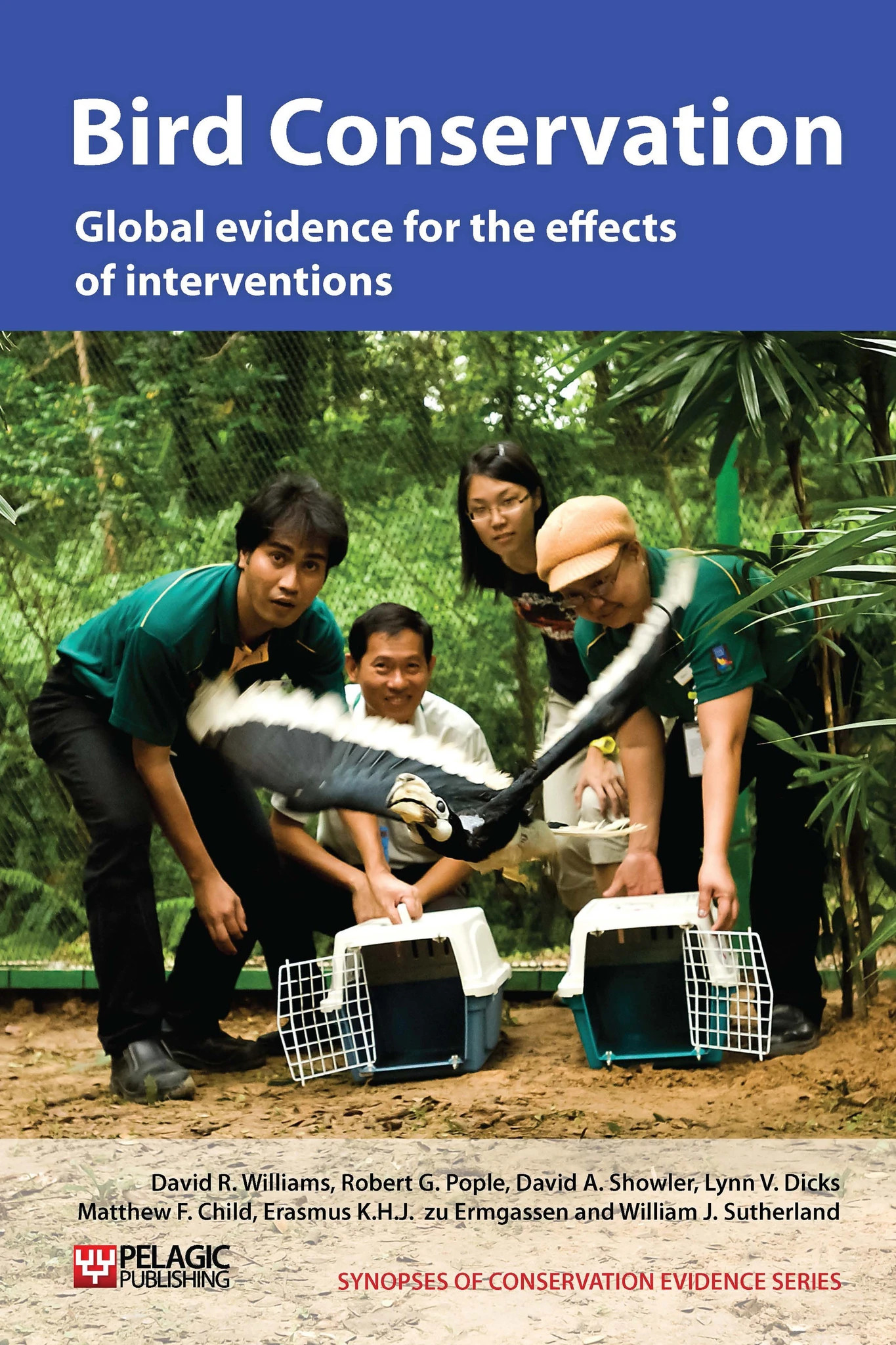Provide supplementary food after release
-
Overall effectiveness category Likely to be beneficial
-
Number of studies: 3
View assessment score
Hide assessment score
How is the evidence assessed?
-
Effectiveness
45% -
Certainty
48% -
Harms
0%
Study locations
Supporting evidence from individual studies
A study using Andean condors Vultur gryphus in arid mountains in Peru in 1980-1 to develop release techniques for Californian condors Gymnogyps californianus (Wallace & Temple 1987) found that both parent- and puppet-reared birds foraged on carcasses provided in the vicinity of the release site. In addition, moving where carcasses were placed and increasing the distance from the release site appeared to help increase the size of the foraging area used by birds. It also allowed researchers to guide birds back to good feeding areas when they were at risk of starvation in bad weather. Carcasses were moved by 50-75 m each day initially, and then by distances of up to 1.5 km as birds began to search more widely. This study is also discussed in ‘Artificially incubate and hand-rear birds in captivity’ and ‘Release captive-bred individuals’.
Study and other actions testedA replicated controlled trial in New South Wales, Australia, in 1987 (Priddel & Wheeler 1990) found that significantly more malleefowl Leipoa ocellata chicks survived the first 30 days after release when provided with supplementary food, compared to control (unfed) birds, birds provided only with water or birds supplied with water but kept in an enclosure with 15 rabbits Oryctolagus cuniculus (89% of nine fed chicks survived for 30 days vs. all 20 other chicks surviving for less than 20 days, with 85% dying within eight days of release). The one fed bird that died survived for six days before being drenched in heavy rain and dying. Of the other releases, six were killed by raptors, five died of starvation, five died of chilling following heavy rain, two died of unknown causes, one died of a cloacal blockage, and one was removed after it fractured its leg. All were found to have little or no food in the crop or gizzard, suggesting that food shortage was a contributing factor in all their deaths. Eggs were taken from wild nesting mounds, artificially incubated and released into 1 ha enclosures with electric fences to keep out mammalian predators. Food supplied consisted of 24 kg of seed mix in both feeders and spread on the ground and replenished at least once a week.
Study and other actions testedA replicated study in mixed forests in Mauritius in 1987-91 (Jones et al. 1992) found that 61% of 44 released captive pink pigeons Nesoenas mayeri (formerly Columba mayeri) continued to use a supplementary feeding station at the release site one month after release. This study is also discussed in ‘Provide supplementary food to increase adult survival’, ‘Use captive breeding to increase or maintain populations’, ‘Release captive bred individuals’ and ‘Predator control on islands.’
Study and other actions tested
Where has this evidence come from?
List of journals searched by synopsis
All the journals searched for all synopses
This Action forms part of the Action Synopsis:
Bird Conservation
Bird Conservation - Published 2013
Bird Synopsis





)_2023.JPG)














